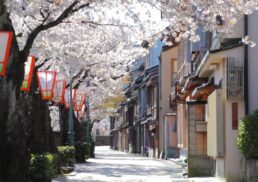Welcome to the fascinating world of Kintsugi, the ancient Japanese art of repairing broken pottery with gold, silver, or platinum. This captivating technique not only restores the functionality of the pottery, but also transforms it into a unique and beautiful work of art. Join us on this journey as we explore the history, techniques, impact on contemporary art, and how to embrace imperfection at home with DIY Kintsugi. Are you ready to discover the beauty of embracing imperfections?
Table of Contents
Short Summary
Kintsugi is an ancient Japanese art form that celebrates the beauty of restoration and embraces breakage & repair as part of a story.
Zen Buddhism & Kintsugi offer reminders to accept our imperfections, transforming brokenness into something special.
DIY Kintsugi encourages us to find beauty in our flaws, cultivating resilience and self-compassion along the way.
The Origins of Kintsugi
Kintsugi, a captivating Japanese art form, dates back to the late 15th century when Japanese craftsmen sought a more aesthetically pleasing and artistic approach to repairing broken pottery. The word “Kintsugi” literally means “golden joinery,” emphasizing the beauty of restoration. Japanese shogun Ashikaga Yoshimasa was dissatisfied with the ugly metal staples used to repair a broken tea bowl, prompting the development of Kintsugi as an alternative repair method. This innovative technique uses lacquer resin mixed with luxurious powdered gold, silver, or platinum to create stunning golden repairs that enhance the beauty of broken pottery.
The philosophy behind Kintsugi is deeply rooted in embracing breakage and repair as part of the object’s story, rather than hiding it. Inspired by Zen Buddhism and tea ceremonies, Kintsugi embodies the Japanese philosophy of valuing imperfections and finding beauty in brokenness. The irregular patterns formed by the golden repair add a refined aspect to the ceramic pieces, turning broken pottery into captivating works of art.
Zen Buddhism and Kintsugi
The influence of Zen Buddhism on Kintsugi cannot be understated. Zen Buddhism emphasizes the value of embracing imperfections and discovering beauty in brokenness. This philosophy is mirrored in the art of Kintsugi, where broken pottery is mended with gold, symbolizing the transformation of brokenness into something beautiful.
Kintsugi’s irregular patterns, formed by the golden repair, draw attention to the fractures and breaks instead of concealing them. This artistic approach showcases the object’s unique journey and embraces its imperfections as part of its story. By valuing and celebrating our flaws, Kintsugi teaches us to appreciate our own journeys and embrace our imperfections as part of our personal narratives.
The Role of Tea Ceremonies
Tea ceremonies played a significant and meaningful role in the development of Kintsugi. The art form was often used to repair cherished tea bowls, which held great importance in these ceremonies. Tea ceremonies offer a space for mindfulness and appreciation of beauty in imperfection, perfectly aligning with the philosophy of Kintsugi.
During the tea ceremony, the repaired pottery is celebrated as a symbol of the beauty of embracing flaws and the richness of time passing. In this contemplative atmosphere, participants are encouraged to recognize imperfections and appreciate the journey of life, further solidifying Kintsugi’s significance in these ceremonies.
Kintsugi Techniques: Transforming Broken Pottery into Art
Kintsugi techniques have the power to transform broken pottery into astonishing works of art using gold, silver, or platinum-dusted epoxy. The art form consists of three predominant styles and methods: crack, piece method, and joint-call, each with their unique beauty and meaning.
At the heart of these techniques is the use of precious metals to celebrate the beauty in imperfections and create one-of-a-kind works of art from broken pottery. The repaired pieces not only regain their functionality but also gain a refined appearance, showcasing the artistry and resilience inherent in the Kintsugi process.
Crack Method
The crack method is the most popular Kintsugi technique and results in a subtle yet stunning lacquer and shimmering veins, creating a delicate and exquisite repair. This method involves joining pieces of ceramic together with a beautiful golden adhesive, enhancing the pottery’s appearance and embracing its imperfections.
By filling the cracks with gold, the crack method highlights the fractures and breaks instead of hiding them. This not only adds a unique aesthetic touch to the pottery, but also serves as a powerful reminder that there is beauty in embracing our flaws and imperfections.
Piece Method
The piece method of Kintsugi is a captivating technique where broken pieces of ceramic are artfully joined together using lacquer and gold. This method involves replacing missing fragments with epoxy replacement pieces, creating a visually striking contrast between old and new.
The thrilling contrast produced by the piece method emphasizes the object’s unique journey and history. By incorporating both original and replacement fragments, this method celebrates the beauty of embracing imperfection and highlights the transformative power of repair.
Joint-Call Method
The joint-call method is an exciting way to combine pieces from other broken wares, creating a beautiful and unique product that celebrates imperfection. This incredibly creative technique involves seamlessly replacing missing pottery pieces with similarly shaped but aesthetically unique fragments, which are then joined together using a beautiful lacquered compound.
The resulting product from the joint-call method is a one-of-a-kind, unified piece that embraces its imperfections. The combination of different pieces creates an aesthetic that is both stunning and significant, showcasing the power of transformation and the beauty of embracing our flaws.
The Impact of Kintsugi on Contemporary Art
Kintsugi continues to captivate and inspire contemporary artists, who embrace flaws and incorporate the art of repairing broken pottery with gold into their own works. From ceramic art to mixed media and urban art, contemporary artists use Kintsugi in a variety of exciting forms, celebrating the beauty of imperfections and the resilience it represents.
The philosophy behind Kintsugi has become a powerful metaphor for resilience and beauty in modern society, as it joyfully celebrates the idea of embracing flaws and transforming them into something beautiful. This inspiring concept has motivated a new wave of artists to create visually splendid pieces that honor the beauty of brokenness and the transformative power of repair.
Ceramic Art
Ceramic artists have been deeply inspired by the philosophy of Kintsugi and have incorporated similar techniques and aesthetics into their creations. By using Kintsugi techniques, ceramic artists enhance the beauty of brokenness and create unique pieces that emphasize the value of repair and transformation.
Kintsugi’s impact on ceramic art is a testament to the power of embracing imperfections and the beauty that can be found in the brokenness of life. By incorporating gold or other precious materials into their work, ceramic artists create stunning pieces that remind us of the resilience and transformative power inherent in the art of repair.
Mixed Media Art
Mixed media artists often use gold leaf and resin to creatively repair and enhance various materials, such as wood, metal, and ceramics. Inspired by the traditional Japanese art of Kintsugi, these artists incorporate the aesthetics and philosophy of Kintsugi into their own works, creating visually stunning and thought-provoking pieces that celebrate the beauty of imperfections.
From painting and drawing to collage and sculpture, mixed media artists employ a delightful variety of materials and techniques to create captivating art pieces that honor the beauty of brokenness and the resilience it represents. Through their innovative use of Kintsugi principles, these artists remind us that there is beauty in embracing our flaws and transforming them into something uniquely beautiful.
Urban Art
Urban artists apply Kintsugi principles to city environments, transforming public spaces into works of art that encourage viewers to see beauty in the imperfections of their surroundings. By using gold to enhance the cracks and flaws in their work, urban artists create visually captivating pieces that embody the resilience and transformative power of Kintsugi.
Kintsugi’s impact on urban art is a reminder of the beauty that can be found in the brokenness of life and the importance of embracing our imperfections. By incorporating the philosophy of Kintsugi into their work, urban artists create thought-provoking and inspiring pieces that encourage viewers to appreciate the beauty of their surroundings and the resilience it represents.
DIY Kintsugi: Embracing Imperfection at Home
Embracing imperfection at home is easier than ever with DIY Kintsugi! By repairing your own broken pottery with gold, silver, or platinum, you can create unique and beautiful pieces that celebrate the beauty of imperfections and the transformative power of repair. With the right tools and materials, you can embark on a rewarding journey of self-discovery and creative expression while learning the captivating art of Kintsugi.
In the following sections, we will explore the tools and materials needed for DIY Kintsugi, as well as provide a step-by-step guide to help you repair your broken pottery. Get ready to transform your broken items into beautiful works of art that proudly display your unique journey and embrace the beauty of imperfection.
Tools and Materials
To create your own DIY Kintsugi, you will need a few readily available tools and materials, including gold, silver, or platinum powder, resin, a brush, and a bowl of water. Other essential tools include a hammer, thick cloth, clear epoxy resin or other ceramic adhesives, gold mica powder or liquid gold leaf, a thin disposable paint brush, bamboo or wooden skewers, and sandpaper.
With everything you need at hand, you can confidently embark on your DIY Kintsugi journey and create stunning pieces that showcase the beauty of brokenness and the resilience it represents.
Kintsugi is a unique art form that celebrates the beauty of imperfections. By using the tools and materials mentioned above, you can seamlessly join the broken pieces of pottery back together, creating a refined and captivating look. end>>>>>>>>>>>>>>>>>>>>>>>>>>>>>>>>>>>>>>>>>>>>>>>>>>>>>>>>>>>>>>>>>>>>>>>>>>>>>>>>>>>>>>>>>>>>
Step-by-Step Guide
Ready to create your own DIY Kintsugi masterpiece? Follow this simple step-by-step guide to repair your broken pottery and create unique and beautiful pieces that celebrate imperfection. Begin by cleaning the broken pieces with a soft cloth and warm water. Next, smooth the broken edges with sandpaper to ensure a precise fit when reassembling the pottery.
Apply the resin to the broken edges and carefully join the pieces together, using bamboo or wooden skewers to mix the epoxy resin or other ceramic adhesives. Sprinkle the gold mica powder or apply the liquid gold leaf with a thin disposable paint brush, adding a beautiful decorative finish to the pottery. By following these ceramic repair techniques, as well as exploring other ceramic repair techniques, you can restore your pottery to its former glory.
Allow the pieces to dry completely before applying a clear protective coating to finish the piece. With patience and creativity, you can transform your broken pottery and broken ceramics into one-of-a-kind works of art that embrace the beauty of imperfection and the transformative power of repair.
The Life Lessons of Kintsugi
Kintsugi offers profound life lessons that encourage us to embrace imperfection, proudly display our broken parts, and find beauty in the brokenness of life. By valuing our flaws and transforming them into strengths, we can cultivate resilience, self-compassion, and personal growth.
The philosophy of Kintsugi teaches us to be gentle with ourselves, stay true to our unique journeys, and look ahead to the future while investing in the present. By embracing our imperfections and finding beauty in our flaws, we can learn from our negative experiences and grow to become more resilient and unique individuals.
Summary
The captivating art of Kintsugi has captured the hearts and minds of countless individuals throughout history and continues to inspire contemporary artists today. By embracing imperfections and finding beauty in brokenness, Kintsugi teaches us invaluable life lessons of resilience, self-compassion, and personal growth. Whether you’re interested in the history and techniques of this ancient Japanese art or looking to embark on your own DIY Kintsugi journey, we hope this blog post has inspired you to embrace the beauty of imperfection and the transformative power of repair.
Frequently Asked Questions
What is the meaning behind kintsugi?
Kintsugi, an ancient Japanese philosophy, encourages us to accept and celebrate our imperfections by joining broken pottery pieces with gold. Through it, we learn to embrace our flaws and the missteps of life, staying optimistic when things fall apart.
This philosophy teaches us to find beauty in our brokenness and to be resilient in the face of adversity. It reminds us that we can still find joy and purpose in life, even when things don’t go as planned.
What is kintsugi for mental health?
Kintsugi for mental health is a self-care platform which allows you to track and improve your mental wellness with journaling, cognitive behavioral therapy exercises, and support from the community.
It provides a safe and supportive space to explore your thoughts and feelings, and to develop strategies to manage your mental health. It also offers a range of tools to help you stay on track with your mental health goals.
The platform is designed to be easy to use.
What does kintsugi mean in love?
Kintsugi in love is a beautiful metaphor for growth and repair, emphasizing that relationships can be made even more beautiful after being broken.
Gold-dusted lacquer is used to repair the pieces, creating an object more beautiful than before.
What is the meaning of kintsugi in the Bible?
Kintsugi, an art of mending broken items with gold, is a representation of how God repairs brokenness in our lives and makes us even more beautiful.
How to repair pottery with gold?
The art of Kintsugi is the traditional Japanese technique of repairing broken pottery with gold and lacquer. This process involves joining fragments together and painting the seams with gold or silver powder to create a beautiful, refined object.
To repair pottery with gold using this method, you must first gather the supplies needed such as mica powder and epoxy resin, sand any sharp edges, glue the ceramic pieces together, apply the gold powder, wait for it to dry, and admire your masterpiece.









